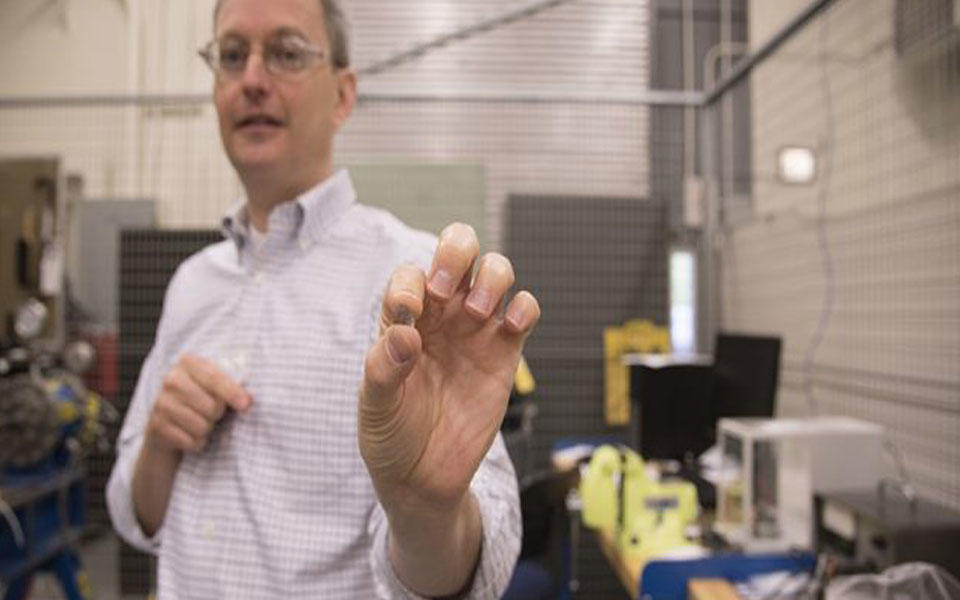Taking Measure
Just a Standard Blog

Right now, scientists all over the world are trying to understand how we get injured when our bodies are subjected to strong, dynamic loads – a hard body-check on the hockey rink, a tackle on the football field, a car crash, or even a bomb blast. Fortunately, I haven’t had any experience with bomb blasts, and I like to think I’m a great driver (don’t we all!), so I haven’t been in any car crashes (so far!), but what I do know something about is hockey.

I grew up in Buffalo, New York. We Buffalonians love hockey, so it should come as no surprise that I’ve been playing hockey ever since I could skate under the crossbar. Like any good hockey player, I’ve had my share of bone-jarring on-ice collisions. While I never suffered any brain injuries as a result, plenty of other players have. If I could contribute to making the game safer in any way, well, that would mean the world to me.
One way we can make the game safer is to develop better impact-absorbing materials. But how do you test how well a material behaves when it is hit really hard and really fast? Smash it with a hammer, of course.
It’s as fun as it sounds.
Besides needing to know how well a material can protect us from harm, sometimes we need to know the best way to turn materials into something useful. Think of machining a critical airplane part out of a block of titanium, say. What’s the most efficient method to chip away at the block so you don’t spend all day doing it? Figuring out that problem requires a very good understanding of how titanium behaves as it’s cut into.
Other times, we need to know how materials behave because we are the materials!
But cracking that problem won’t be easy. Knowing why injuries, especially brain injuries, happen is a lot more complicated than it seems, as is knowing how to prevent an injury from happening in the first place, which brings me back to materials. Understanding how helmet padding protects your head, or how your car’s structure collapses during a crash, or how your brain responds inside your skull when you are hit, are all critical to getting to the root of the problem.
That’s where my job comes in. It’s a small part of the whole picture, but I like to think that it’s pretty important.

Basically, I use a very well-calibrated hammer that has been outfitted with lots of high-speed cameras and other devices to measure how materials respond when they are subjected to dynamic loads like the ones we’ve talked about.
Sometimes it’s fairly straightforward, but many times it’s not.
For materials that approximate our brains, for example, it’s extremely tricky to understand how it responds when it gets whacked. Think of trying to measure the jiggling of a bowl of Jell-O. But understanding the behavior of your brain during a dynamic impact is key to understanding brain injuries. So what I do is try to capture the jiggling using high-speed cameras that take hundreds of thousands of pictures in a second, and I actually try to measure (in three dimensions!) all the jiggling using a new and useful image-based measurement technique called Digital Image Correlation.
This technique allows me to capture the aforementioned jiggling with unbelievable accuracy—within a fraction of a human hair—and I can then use the data to figure out how to simulate the material’s behavior on a computer.
This last part is really important because if my measurements can help scientists figure out how to accurately simulate brain tissue in a computer, we are really getting somewhere.
That goes for any of the materials I test. Being able to take measurement data from a lab like mine and use it to help simulate real events, like a car crash, helps engineers design better, safer and more reliable products that make all our lives better.
And that’s the real reason why I have so much fun coming to work!
About the author
Related Posts
Comments
- Reply





